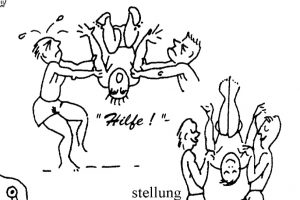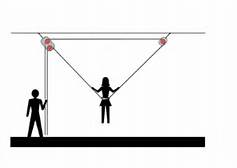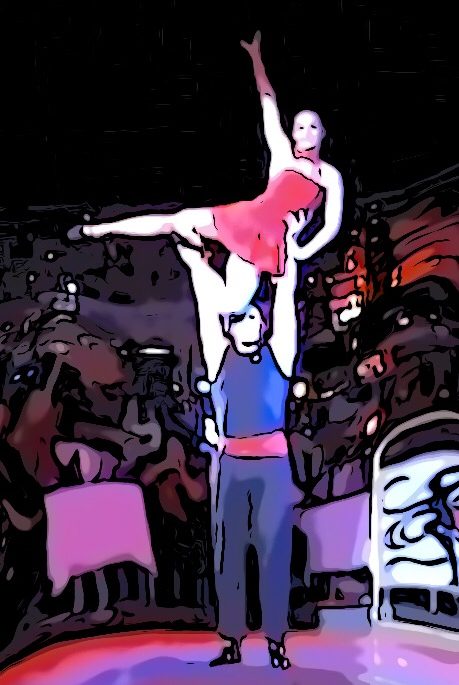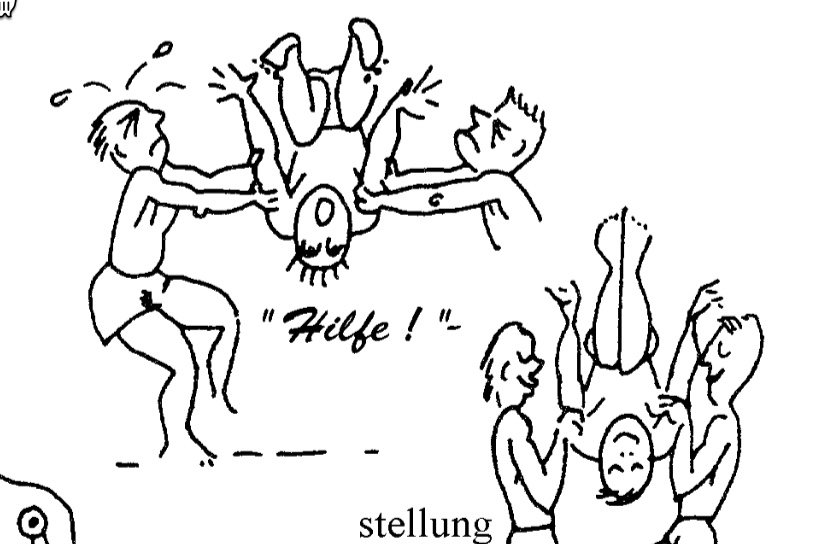In principle, the safety-helper (spotter) should know the trick itself, so that he recognizes the potential dangers in good time.
Arrangements: First, the helper is informed, which trick to secure and what is expected of them. In principle, the helper is never directly in front of or behind the base so that no-one does stumble during a correction step. As soon as more than one correction step is necessary, the base breaks off, otherwise it forces the helper(s) to run along. A helper can not catch well, while he moves! An unintentionally rotating base also forces the helper to move. The best positions to secure are diagonally in front or behind of the base. The helper already aim at the expected contact points to catch the flyer!
If the base loses control, an otherwise static trick quickly becomes dynamic!
Providing assistance means being able to catch the flyer completely if necessary! It’s the flyer’s crash helmet, so to speak … It does not help if the help is just standing around or catching the flyer’s foot. A broken foot heals within 6 weeks. An injury to the head can cause permanent problems! If the help is overwhelmed, just try another trick!
The helper catches the upper arms of the flyer, near the shoulders. It is also important that the thumb does not point downwards when catching, otherwise the flyer could slip through. This often causes difficulties, because the hands are possibly twisted at the beginning of the trick, so that they can then really catch at the end of the trick.
Another risk takes place in the head of the flyer. If he breaks off too soon, or tries to hold on to something, then he becomes unpredictable for the helper. If the flyer holds on or makes balancing rudder movements, the assistance does not have a good grip and must correct this with a lot of experience and / or high risk. This may e.g. result in a Tendon tear due to an uncontrolled blow of the flyer on the muscles of the helper. If a flyer is prone to panic, he should either try simpler tricks, or motivate a lot of helper securing him. For complex tricks in which the flyer loses its orientation, it is mostly worthwhile to split up the trick (if possible) into its positions and to train the transitions individually.

Attention: the force line while spotting is not ideal! The center of gravity of the flyer is normally directly above that of the base. When falling, the flyer instinctively presses itself away from the base, pushing apart the base and the assistance. The resulting levers are extremely unfavorable for catching. The experienced help will always stand with its own center of gravity in the fall line of the flyer and attract the flyer to itself. But beware: take care of your head!
For dynamic tricks, the help has to touch early. In addition to the fall speed, the moment of inertia of the rotation adds up, resulting in high angular velocities of the flyer’s arms and legs. A secure grip is then often no longer possible. So better intervene too early!

For Tricks with a lot of rotation or a high drop (→ throw), I recommend always to use a longe until the trick is safe. The rope of the longe must not sag so far that the flyer can get tangled up in it. Each longe has an individual elasticity, which requires a different fishing behavior. Before the longeur secures the trick, he should first test the response of the longe. Again, it is better to brake the flyer too early, even if you mess up the trick with it. As long as everyone is healthy, the trick may be repeated …
Deutsch

